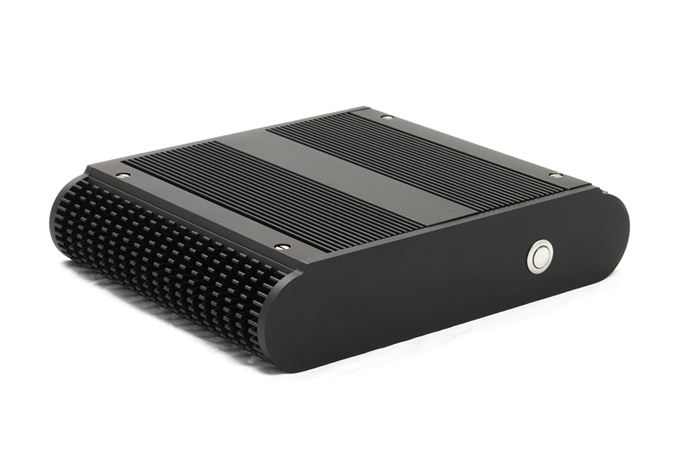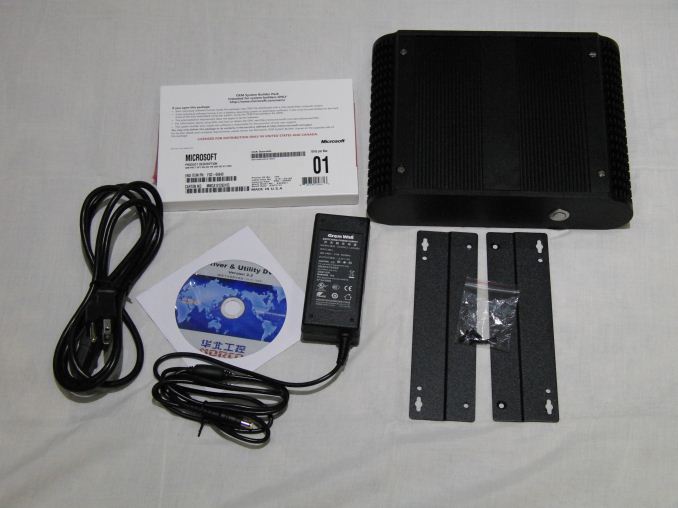HABEY BIS-6922 Fanless Ivy Bridge Industrial PC Review
by Ganesh T S on August 13, 2013 9:00 AM EST- Posted in
- Industrial PC
- Ivy Bridge
- Passive Cooling
- Habey

Introduction
Industrial PCs come with stringent requirements that are not satisfied by generic PCs. It is customary for builders to use active cooling in order to ensure that the components are in proper working order. Ventilation slots are also provided to keep airflow up. Chassis size is also not always a concern. However, these flexibilities are not always possible in industrial PCs. Operating environments for such systems usually call for passive cooling, dust resistance, rugged nature and minimal size (read, mini-ITX).
We reviewed the Aleutia Relia last year. Today, we are adding another fanless Ivy Bridge PC to the list, the Habey BIS-6922. The unit was launched late last year. Unlike units meant for the traditional PC market, embedded and industrial units are more focused on long term support and reliability rather than the latest and greatest that the silicon vendor has to offer. So, it is not surprising that Ivy Bridge-based industrial computers are seeing a strong presence in the market only now, after long-term validation by the manufacturers. The high level specifications of the BIS-6922 are available in the launch piece. In the table below, we have a quick overview of the configuration of the review unit sent by Habey.
| Habey BIS-6922 Industrial PC Specifications | |
| Processor |
Intel Ivy Bridge Core i7-3720QM (4 x 2.60 GHz (3.60 GHz Turbo), 22nm, 6MB L2, 45W) |
| Chipset | Intel QM77 |
| Memory | 2 x 4GB DDR3-1333 |
| Graphics |
Intel HD Graphics 4000 650 MHz / 1.25 GHz (Turbo) |
| Disk Drive(s) | 60 GB Intel SSD 330 |
| Networking | 2 x Gigabit Ethernet |
| Audio |
Microphone and headphone/speaker jacks Capable of 5.1/7.1 digital output with HD audio bitstreaming (HDMI) |
| Operating System |
Windows 7 Professional 64-bit (Retail unit has choice of OSes including barebones option) |
| Pricing (As configured) | ~$1500 (Varies depending on customization) |
| Full Specifications | BIS-6922 Specifications |
Our review unit came with the above internal configuration. In addition, we had the installation disk for a OEM copy of Windows 7 Professional x64, a 60 W DC power adapter, mounting plates with screws and a driver and utility CD. I wonder why companies bother with these optical discs when the product itself carries no optical drive. With Flash becoming more economical day-by-day, it might make better sense to bundle these in a USB stick instead of a CD or DVD.
The first section of the review will deal with the setup impressions and teardown of the system. We will take a close look at the thermal design. This is followed by results from our performance evaluation. The numbers will help up get an idea of the relative performance of the unit compared to other PCs with low power consumption. A separate section on thermal performance is also included.











63 Comments
View All Comments
lmcd - Tuesday, August 13, 2013 - link
And if they wanted the CD they can just set up with an external CD drive, which oftentimes they already have on-hand. Once external CD drive can serve a whole setup team and any of the different industrial pc models.airmantharp - Tuesday, August 13, 2013 - link
I think the USB stick is the better way to go; how would it look for a retailer to ship a system with a CD in the box and no drive to read it? That's the kind of thing the government does :).evilspoons - Tuesday, August 13, 2013 - link
Appreciate seeing the reviews of industrial equipment. I use machines similar to this on a regular basis at work (electrical engineer doing industrial automation). The PCs are used to run HMI software for motion controllers, as well as NI's LabView.This specific model doesn't meet my needs in a few ways - lack of serial ports and lack of 24 V DC input power, but it's good to be aware of other brands.
I'm curious how my usual choice would stack up against this. I've used dozens of Advantech UNO-21xx units, mostly the UNO-2172 with a slow-as-hell Celeron M 1.5 GHz CPU, but they've recently released the UNO-2184G that gets you all the way to some sort of second-gen Core i7. Haven't tried one yet though.
kmmatney - Tuesday, August 13, 2013 - link
You can always use USB-RS485 or USB-RS232 converters. We've been using converters from EasySynch and they work great.alex_alfanet - Friday, August 16, 2013 - link
evilspoons, I found from this company this option PRO-6820, may be it's what you need. it has 12v-28v dc option and 4 serial ports.ddriver - Tuesday, August 13, 2013 - link
Hey, maybe it is just me, but when I hear "industrial equipment" I imagine durable, overbuilt, mission critical hardware...The thermal performance is unacceptable, and I doubt that hardware will last more than 2 years before frying itself. Certainly not something I would rely on.
A shame, considering how those rounded radiators really invite the idea for a pair of nice low RPM cylindrical turbine fans that would keep it nice and cool.
Rick83 - Tuesday, August 13, 2013 - link
Well, I'm not sure anyone has done long-term thermal testing of this hardware quite yet. Additionally, I doubt that the usual scenario will see it running at full load for more than minutes at a time. If it were run full throttle for extended amounts of time, I would expect the PSU to fail first.If you run this device 24/7 at full load, you will know this in advance, and have cooling installed inside the cabinet. But clearly, this was not designed for this kind of permanent load. Still, the cooling keeps everything within spec, so if anything goes wrong inside the first two years, you'll be covered by warranty.
airmantharp - Tuesday, August 13, 2013 - link
Based on how quickly it cools down, having any real airflow over it would likely mitigate most cooling concerns, even in the rare instance of a 100% sustained load over time. I think ddriver is over-dramatizing the issue quite a bit; as you (Rick83) say, the PSU would be likely to fail first, and anyone using this system would be aware of the thermal constraints beforehand and would build the rest of the 'system' with that in mind. And that wouldn't be very hard to do.ddriver - Monday, August 19, 2013 - link
Considering the outside of the case hits 70 degree C and it is even hotter inside, that already puts most of the components outside of their optimal operating temperatures, dramatically increasing the chance of errors or failures. Industrial strength equipment never operates on its limits and mandates significant headroom.God forbid this thing gets direct sunlight while under load...
cjs150 - Tuesday, August 13, 2013 - link
Very interesting. I have a fanless HDPLEX case running an i7-3770T. Running at full load for about 45 mins it tops out at around 92C core temperature (room was 23C). I use it as an HTPC so other than encoding a Bluray it rarely gets stressed to that level. Hdplex have improved the case since I got mine so may well run a few degrees cooler with the new case.I believe that the best way to drop core temperature is to remove the IHS, replace the crap intel thermal paste with something decent and refit IHS. I could not be bothered, but worth considering